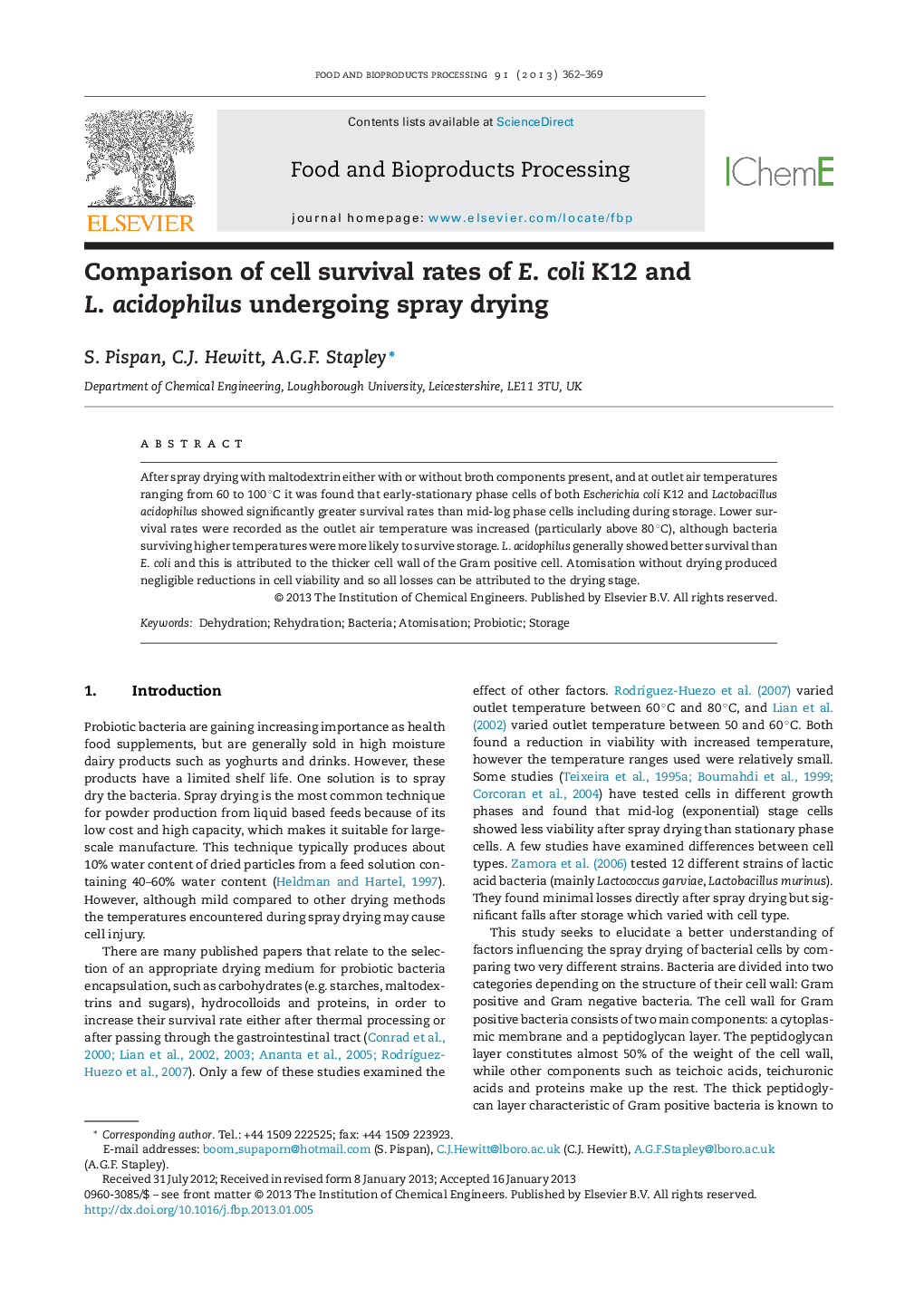| Article ID | Journal | Published Year | Pages | File Type |
|---|---|---|---|---|
| 19100 | Food and Bioproducts Processing | 2013 | 8 Pages |
After spray drying with maltodextrin either with or without broth components present, and at outlet air temperatures ranging from 60 to 100 °C it was found that early-stationary phase cells of both Escherichia coli K12 and Lactobacillus acidophilus showed significantly greater survival rates than mid-log phase cells including during storage. Lower survival rates were recorded as the outlet air temperature was increased (particularly above 80 °C), although bacteria surviving higher temperatures were more likely to survive storage. L. acidophilus generally showed better survival than E. coli and this is attributed to the thicker cell wall of the Gram positive cell. Atomisation without drying produced negligible reductions in cell viability and so all losses can be attributed to the drying stage.
Graphical abstractFigure optionsDownload full-size imageDownload high-quality image (79 K)Download as PowerPoint slideHighlights► L. acidophilus (Gram positive) survived spray drying better than E. coli K12 (Gram negative). ► Early stationary phase cells survived better than mid-log phase cells. ► Better survival was found for both bacteria when broth components were included. ► Bacteria surviving higher temperatures were more likely to survive storage also. ► Atomisation at 60 psi did not show appreciable damage to either bacterium.
